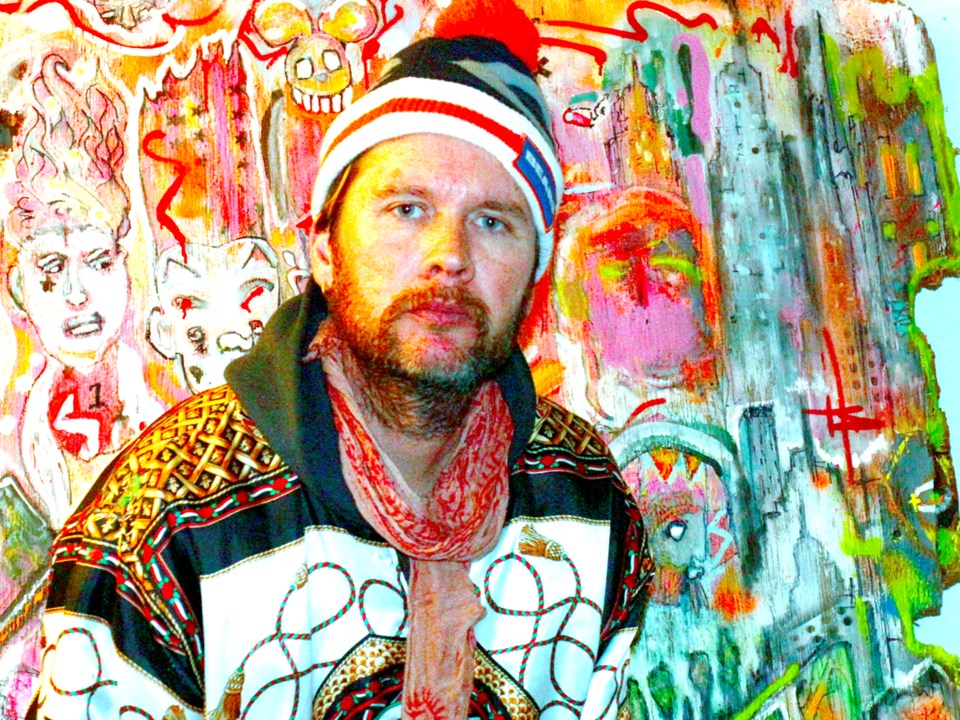Artist and photographer Adam Cramb is known for frenetic, graffiti-style art pieces that combine many different themes, including urban, rural and political. Born and raised in Powell River, Cramb struggled with depression several years ago when he found himself in a stressful job situation while living away from his hometown. Now a prominent member of the local arts scene, including as one of the main forces behind Kaleidoscope Collective, Cramb has found his place in the community and been able to inspire young artists looking for a way to express themselves.
When did you realize, “Hey, I’m an artist.”
When I went through that big depression I hit bottom and when I came back up, I was rediscovering who I was, and trying to figure out why I wasn’t feeling completely fulfilled. I watched this movie The Shift, by Wayne Dyer, and it talked about finding your own nature and had me looking more into art. Once I was out of that generic, nine-to-five lifestyle, it made me free of that world.
Do you remember how it felt the first time you created an art piece you were really proud of?
I’m sure it goes back to elementary school, but more in the past five years. [Tla’amin Nation] elder Charlie Bob invited me out to paint a carving and I started painting with a brush. Then I started drawing and painting on canvases and doing collages, and it just sort of happened. One piece I sold at my first show, called Urban Nature, had everything in there; the totems were in there, it had skateboarding, it had graffiti, it had nature and animals, themes like death, martyrdom and the church, so when I look at my art since that piece came out, it’s all relative. That piece was a vision of my wholeness.
Graffiti is a big part of your style. When did that start for you?
I was always into the surf/skate/snowboard scene. When I moved to Banff in the early ’90s and started to get into snowboarding, that new-school culture was inundated by graffiti; there was a combination of music, art, dance and always riding of some kind. There was always that ability to go into speed, a momentum.
Do you still get resistance to your style of art?
Oh yeah, I think that’s an inner journey, too; the fear aspect. My mom was over the other day and said, “Oh, it’s awfully scary,” because there’s always a lot of blood and red paint in my work. It’s about victimhood, and I don’t totally see myself as a victim, but more an individual in a common, generic space.
How does punk rock and do-it-yourself culture influence your art?
It’s raw. It grabs what’s accessible and uses it. It finds dead materials, materials that are affordable or free, to express myself. People don’t have to wait until they have all of the right equipment; it’s all about just using what you have. Money should never be an object. People say it’s expensive to be an artist and I say, “Well, actually, it depends on what kind of artist you want to be.”
What would you say to someone who feels unfulfilled on their creative side?
Go to art shows and hang out around other artists. I found that the community of artists was something I was always searching for, and now we have more accessibility to people of all ages who are involved in the art community. It’s about finding people who are doing stuff you want to do, and getting to know them. Also, ask lots of questions.
For more information, go to deswestcoast.wordpress.com.



